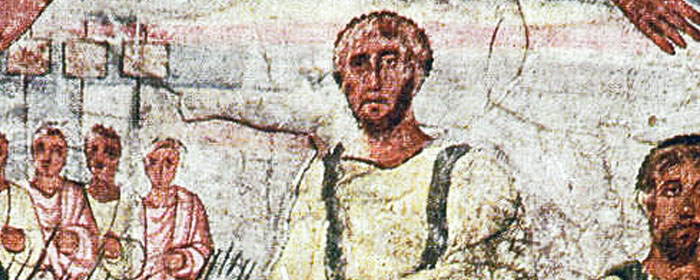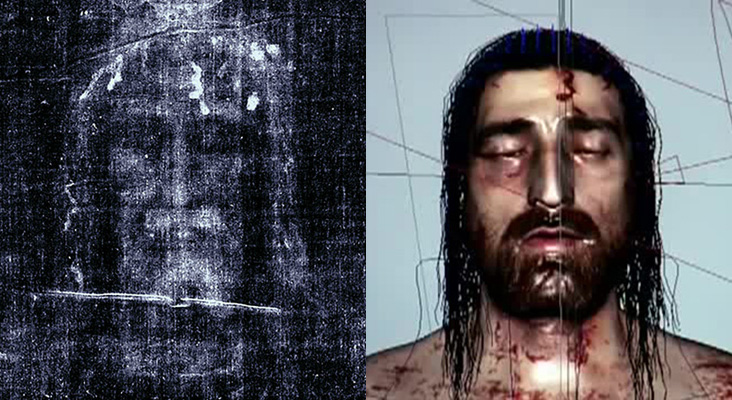In the last two articles I have discussed what Jesus’ clothes and body might have been like, based on a variety of evidence. Today, we explore Jesus’ face: What can we actually know about it, and how I settled on a look for my comic. I wanted to have the most historically probable look but also something that would be good for a comic hero. The way I arrived at Yeshua’s face came through a combination of picture evidence, textual and cultural hints, creative license and a 3D model. I explain all of this here:
The most Recognizable Face ever…
The face of Jesus Christ is one of the most recognizable in history—everybody today has a certain image of Jesus in mind, based on standardized templates that permeate through culture.
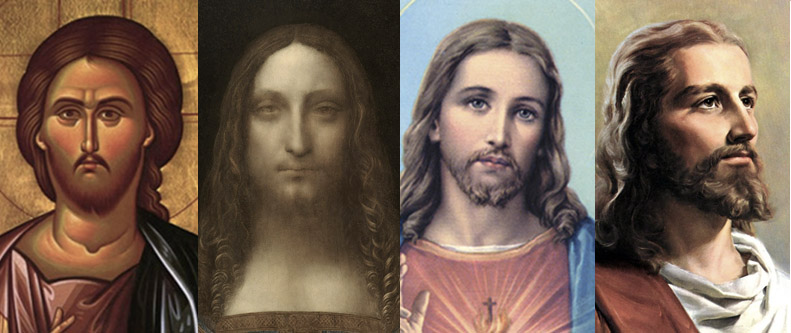
The images above represent the look that has come to be the established stencil: shoulder-long hair parting in the middle, and beard. This Western “Hippie Jesus” dates back to as early as the 4th century. However, the artistic record before that is not consistent at all. The very few earlier paintings depict Jesus as a young Roman: short hair, clean-shaven face, waving magic wands to perform miracles. Church historian Eusebius claims that images, even statues of Jesus in his lifetime (the early 4th century) preserved his likeness, just at the time when the shift from “Roman look” to “Hippie look” occured.
The textural hints are contradictory as well. While Church Father Irenaeus and some non-canonical scriptures describe him as “short,” “weak,” and “crooked,” Jerome and Augustine think he was beautiful.
I could say much more here, but the main conclusion is that we have no reliable image or description of Jesus from the church tradition. And still, although there is almost no historical reason to portray him in this way even the most recent Jesus depictions on film and tv relentlessly build on this stencil. But what is the truth?
...an Ordinary Face, actually
As mentioned before, the Bible gives no direct information about Jesus’ appearance or features. Now, that might be a literary technique: perhaps the gospel authors didn’t want to draw attention to his appearance, focusing on his words and deeds instead. But the fact that all four evangelists omit a description is curious. Did they want to keep secret that Jesus was ugly or disfigured?
The answer is probably more simple. The evangelists had no information worth mentioning. They might have known about Jesus’ features, but they were so generic that they dismissed it. This is typical of ancient biographies. On the other hand, they made room to describe the strange look of John the Baptist.
And here is a first hint about Jesus’ look: It was not special. Jesus was criticized for his teachings and actions, his hometown even, but never for his appearance. If it had been a target for slander, wonder or discussion, it would surely had caused ripples in the gospel stories. It’s safe to assume that he looked like any other rural Judean of his age.
Remember when Jesus was arrested by the Temple police. Judas Ischariot had to lead the guards and kiss him so that they would not take the wrong guy… and there are many incidences in the gospels where Jesus blends with the crowd to get away from danger. He didn’t stick out.
I
The Face of Class
So how did typical rural Judeans of the 1st century look like?
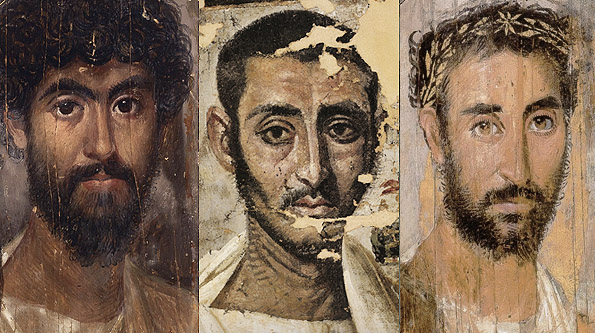
Again, we can look at the frescoes of the Dura-Europos synagogue in Syria. There are also amazing pictures of Egyptians from the time: The Fayum Mummy Portraits. Roman historiography claims that Judeans who lived in Egypt were indistinguishable from the native population…
Although these are wonderful sources, we have to be careful. Only rich urbanites could have their portraits painted, and even though especially the Fayum faces look amazingly naturalistic, all ancient paintings follow certain artistic and cultural ideals. They don’t tell about the majority rural population to which Jesus belonged.
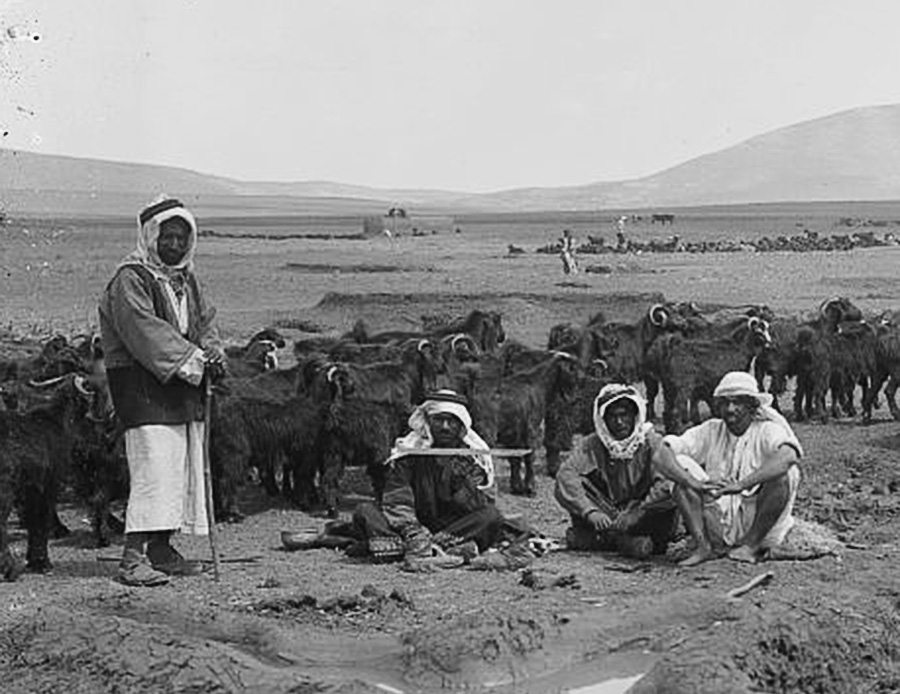 I referred to 19th century photos of rural Palestinians again: the edgy, rough-skinned faces of people who have worked the land with their bodies all of their lives. Jesus’s face could have looked like any of these people in the photo.
I referred to 19th century photos of rural Palestinians again: the edgy, rough-skinned faces of people who have worked the land with their bodies all of their lives. Jesus’s face could have looked like any of these people in the photo.
Even though in the previous article, we found that Jesus had a “general Middle Eastern” look, I find it hard to extrapolate obvious “Middle Eastern” features from photos such as “typical” skull shape, noses, eyes or mouths…
II
The Kosher Haircut
One thing we might rule out is the shoulder-length mane that has become the staple of Hippie Jesus. Ancient Romans wore their hair rather short, and Judeans followed suit. As Paul, strict Judean that he was, writes in I Corinthians 11:14,
Doesn’t nature itself teach you that if a man has long hair, it is a disgrace to him…
As the frescoes in the Dura-Europos synagogue show, most young men’s hair is short, curly, and dark. Others, however, have round curly manes which almost look like afros. I don’t know what these mean. Did people remember something like that mane on Jesus? Regardless, Joan E. Taylor says that, “People kept their hair and beards short and well-combed, probably to keep out lice, a big problem at that time.”
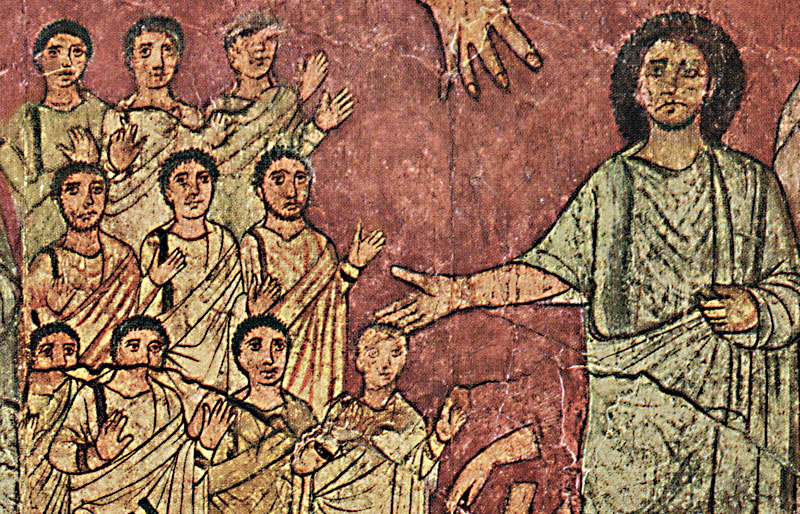
The Mosaic Law regulated how Jewish men were supposed to appear. This involves growing the famous sidelocks (pe’ot), from Leviticus 19:27:
Do not round off the corner [=pe’at] of your main hair or mar the corner of your beard.
Many people assume that Jesus, a pious Jew, would follow these commandments and also grow long sidelocks like Orthodox Jews today. However, none of the Judeans in the Euro-Duropos murals show sidelocks!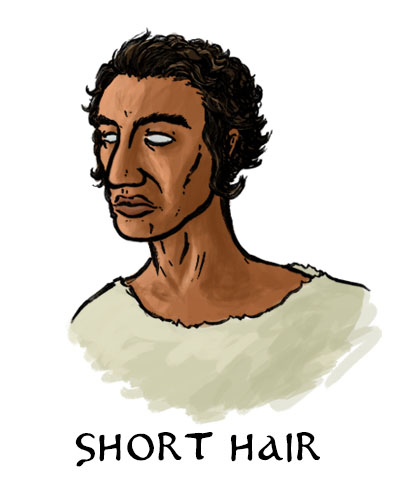 Judea and Galilee were under the influence of Greek/Roman culture, and it was en vogue for the high society to style like their usurpers. Not that pe’ot had disappeared altogether. But depending on the peer group, they might have been quite long to quite short.
Judea and Galilee were under the influence of Greek/Roman culture, and it was en vogue for the high society to style like their usurpers. Not that pe’ot had disappeared altogether. But depending on the peer group, they might have been quite long to quite short.
Appearance in antiquity was about group identification. Similar to today’s Jewish groups, there surely were debates on the godliest way of growing temples. Different sects and classes probably had different hairstyle traditions just to stick it to their rivals. This remains open to artistic interpretation.
My hunch is that the Galilean labor class was more lax on Mosaic laws (something that Pharisaic writers lamented about) and wore practical, shorter sidelocks tucked behind their ears.
For my comic, I gave Yeshua dark wavy hair with sidelocks tucked into his headgear. It’s is a bit wilder than average since he hadn’t had a cut after meeting Yochanan (John the Baptist). And I avoided the center parting.
III
The Beard is There
Most of the Dura-Europos males are beardless. Some major characters have short beards, just as Fayum men. Ancient portraits of St. Peter and St. Paul always show them bearded, so it was accepted. Many Judeans deviated from the general Roman style. Jonathan Lipnick, Dean of the Israel Institute of Biblical Studies, writes:
The Hebrew Bible contains many passages which make it clear that beards are vital part of Israelite fashion.[…] Certainly the majority of Jewish men still had beards […]. There was a small population of highly Hellenized Jews that might have shaved their beards,…
In more ancient days, trimming or shaving one’s beard would have been humiliating. Even though fashion had changed in the Roman era, my hunch is that most village laborers didn’t shave every day, and that a beard was still seen as proper for a law-abiding Israelite. There probably was no uniform rule here.
The reason I drew Yeshua with a beard is practical. As a wandering preacher he would have let it grown anyway. I also think that he kept the Mosaic instructions.
Jesus, the Nazirite?
Now, there is an exception to all of the above. In Judean custom, men who took a special ascetic vow to God would not cut their hair and beard. These were called Nazirites (nazir=”consecrated”). There is still speculation whether Jesus was actually called Jesus “the Nazirite” and not “from Nazareth” (Nazarēnos/Nazōraios). However, I’m not convinced.
IV
Mesmerizing Eyes
Apart from hair style and the “Iraqi Jewish face” there is nothing else we can say about Jesus’ facial traits. One thing, however, might be hidden between the lines. Something about his eyes.
In “Das Unternehmen Jesus,” writer Leo G. Linder points out that the gospels repeatedly refer to the look in Jesus’ eyes. They must have had a special expression, Linder concludes. This is the realm of speculation, but even non-canonical gospels such as the Gospel of Judas mention Jesus’ eyes. We all know some people who have an unusual, powerful kind of look. Jesus was not just anybody. He fascinated people. It’s not too far-stretched to imagine him having had captivating eyes that stayed in people’s memory.
I decided to make Yeshua’s eyes a feature that stands out… and although the comic is in black and white, they are supposed to be green (because I find green eyes the most fascinating) with thick eyebrows. And yes, Middle Eastern people do have green eyes, not only brown.
V
The Rest is Faith
For a while, the question of Jesus’ face tortured me. The thought that the true image of the one person who matters so much for me would be forever lost behind the shroud of history felt unbearably tragic…
But wait… did somebody say ‘shroud’?
Here is where it gets crazy.
The Catholic relic known as the Shroud of Turin has long been revered as the burial cloth of Jesus. It had supposedly wrapped his dead body, and then somehow recorded a miraculous image of that body onto the linen surface. The artifact was passed down the generations through the church and is now stored in Turin, Italy.
Even if all of that is hokum, a negative photograph of the whole shroud does reveal the image of a crucified dead man even more clearly than the original, and that is just… strange…
There’s lots of controversy around the authenticity and age of this mysterious piece of cloth, and a vast amount of research… I will not go into detail here. But personally, I believe that the shroud is real and the image on it is a body-scan of the real Jesus of Nazareth.
I know how ludicrous this might sound—maybe I will explain this another time. But one thing that convinced me is the fact that computer graphics experts were able to reconstruct a 3D image of the shroud’s face. This project is documented in the History Channel show “The Real Face of Jesus?” (Watch it here for free or get the DVD). What made me tip me was the reverse engineering the artists achieved: After fabricating a physical model of the head based on the 3D image, they took a 2D scan… when they finally overlayed the scanned picture with the negative image from the shroud, it was a perfect match. Unless someone explains to me how a medieval forger could have burnt a negative monochrome “scan-perspective” image with holographic information onto a piece of linen…
But I’m getting off-topic. What I want to say is that I used this 3D model as an inspiration for Yeshua’s look in my comic: big nose with broad nasal root, flat mouth and chin, the rather broad cheek bones… I also added a liver spot under the right eye and a thick underlip as a personal accent. I tinkered from there until I arrived at the look that would finally fit his personality in my story, of course. To give his head and face a dynamic shape…
Not bad! He even could fit into an Iraqi Jewish community or stare at you from a Fayum painting, no?
One more thing: The man in the shroud is quite tall. I saw articles that argued that many political leaders are taller than the average. Perhaps we tend to subconsciously trust tall people as leaders. It was from these consideration that I went against historical probability and made Yeshua taller than the others. So in the end, this is the image of Yeshua in THE REIGN OF GOD.
Is this legitimate? Well, without the Shroud of Turin, we do not have any other hint as to Jesus’ look except for the points above. I know that considering the shroud departs from consensus science, but it’s better than nothing. Like almost everything else connected to Jesus, it is a matter of faith…
References
Eusebius: The History of the Church
Louis C. de Figueiredo: Professor Giulio Fanti discusses the controversies in the realm of Shroud studies
Leo G. Linder: Das Unternehmen Jesus
Owen Jarus: What Did Jesus Really Look Like? New Study Redraws Holy Image
Jonathan Lipnick: What Did Ancient Israelites Look Like?
Joan E. Taylor: What Did Jesus really look like?
Exciting Afternote!
Just as I was thinking about this topic I saw that there is a new book out: “What did Jesus look like?” written by none other than historian Joan E. Taylor. I respect this researcher so much! Without her study “The Immerser,” my depiction of Yochanan (John the Baptist) in my book would have been uninspired and old. Taylor’s research of ancient sources is so thorough, I’m thrilled to find out what she has to say about Jesus’ look.
